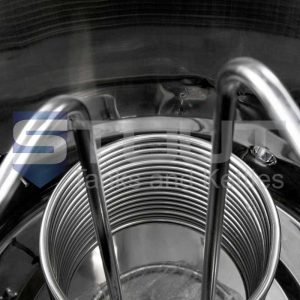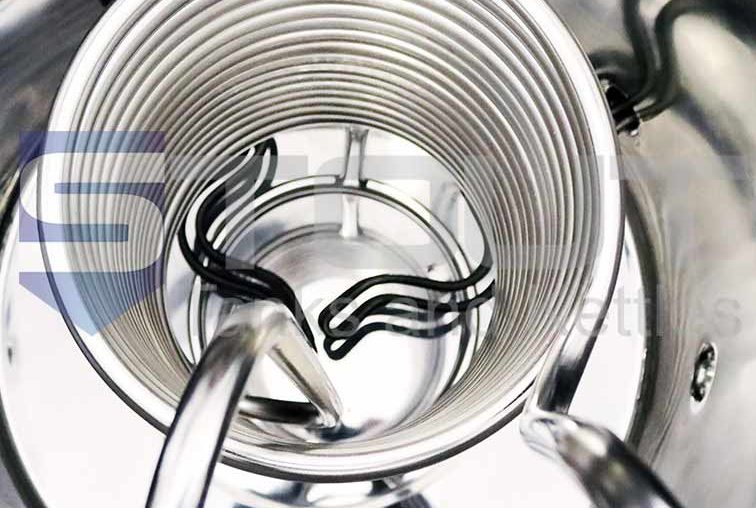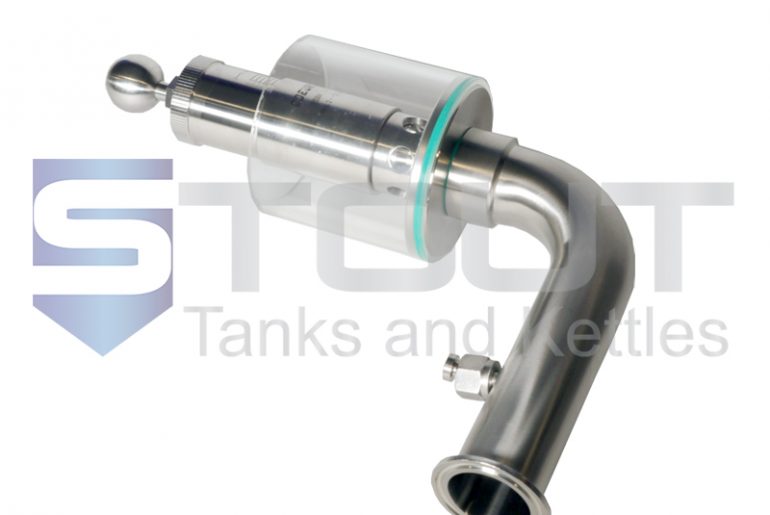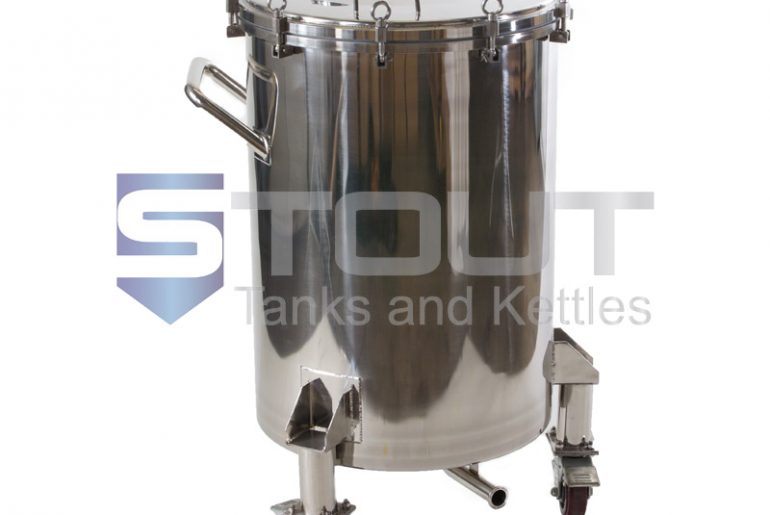(The following is a first-person narrative from Stout Tanks and Kettles’ owner John Watt.)
A HERMS coil in a hot liquor tank is a useful tool for maintaining and increasing mash temperature, providing the ability to maintain consistent temperatures during the mash, but also providing the ability to step mash without infusions and without overheating the wort. We have found that they are useful at both the homebrew and nano/microbrew scale.
What is a HERMS coil? Heat Exchange Recirculating Mash System coil; or simply, it is a coil of stainless steel tubing placed into a hot liquor tank. It can be either built-in, with connections going through the hot liquor tank wall, or the coil can be just set into the hot liquor tank. Electric HLT’s normally require that the coil be positioned above the heating elements; therefore, the electrically heated HLT HERMS coil is raised.
I am going to share my experience using my HERMS coil. I use mine with every brew now, and it makes brewing so much easier and I believe, makes for better beer. Why? Because I am able to maintain mash temperatures within a small range, and I am able to quickly do step mashes without overshooting or undershooting my target temperatures. Hitting and maintaining your temperatures in brewing is one of the biggest factors to making better beer.
I hope this information provides solid guidance to you, but you should also know that your experience may be different for all kinds of reasons.

When I am raising my mash temperature, I have found that I can set the hot liquor tank to 5 degrees Fahrenheit above my target temperature while I run the HERMS and get a good result. With this, I get a nice, relatively quick temperature rise in the mash tun. I change the HLT setting right when I start the mash step-up with the wort running through the HERMS coil, so that the hot liquor tank temperature is rising at the same time as the mash tun.
I like this because it is not neutralizing the mash enzymes unnecessarily. For example, if I were to raise the HLT to 10 degrees F above the mash then the wort coming out of the HERMS coil will be that much hotter. This will cause more enzymes to be neutralized; the very enzymes I want to be active for the mash.
This temperature setting will vary based on the flow rate of the wort going through the HERMS coil, fill height in the HLT, and volume of the mash. Faster flow rates mean less heat will be transferred and thus higher temperatures may be needed. Conversely, slower re-circulation rates will mean more heat transfer and lower HLT temperatures may be needed. You should experiment with your system and your pumps as each system is unique – knowing your system is a part of the brewer’s journey.
I also use the HERMS coil to maintain mash temperature. This is a very easy way to keep the mash temperature constant for long step mashes when making traditional lagers, for example. I have found that when I am maintaining temperature, I only need to keep the hot liquor tank about 3°F above the mash temperature. If your mash tun is insulated, you may use similar or lower temperature settings on HLT. Insulated tanks will hold temperatures steady longer than tanks without insulation. Again, these parameters will change based on your system, the batch size, flow rates, coil dimensions, etc., so you need to experiment on your system.
Over the years, at Stout Tanks and Kettles we have increased the coil diameters and lengths of the built-in HERMS coils in our hot liquor tanks to improve efficiency and speed. While the old coils were able to get the job done, now they do it faster and better than in the early days. We constantly strive to improve designs based on real world experience.
In summary, a great way to improve your beer is to use a HERMS coil in place of infusions or direct heating to adjust or maintain your mash temperatures. The heat is indirectly transferred and is both efficient and gentle for your brews.



